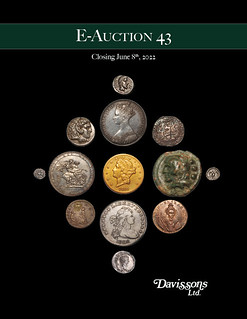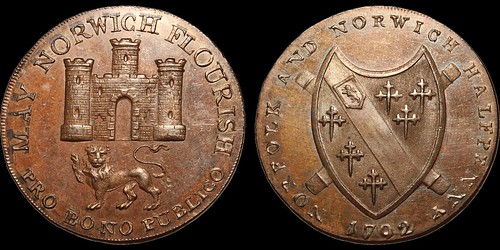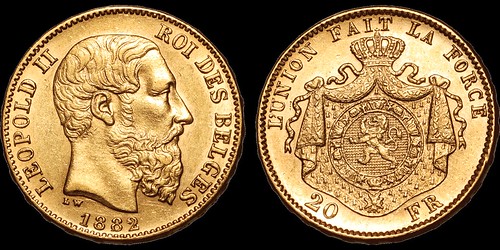
PREV ARTICLE
NEXT ARTICLE
FULL ISSUE
PREV FULL ISSUE
V25 2022 INDEX E-SYLUM ARCHIVE DAVISSON'S ANNOUNCES E-AUCTION 43Davissons Ltd. has announced their E-Auction 43, which closes June 8, 2022. Here's an excerpt from today's email to clients penned by Allan Davisson, which discusses pricing and valuation before providing a short preview of the sale. -Editor
Most of what we offer is specialized and much of it rather obscure. So we work to provide a defensible valuation that both seller and buyer should find within a range of current market pricing. It was reading a catalog from a British colleague that led me to think about writing about valuation. That catalog offered a number of lots of modern British gold estimated at current market levels—note the actual prices realized below. But the catalog also published what the consignor paid fairly recently to two English firms outside the established community of British coin dealers. The prices the consignor paid for modern mint issues were remarkable in terms of what they are worth in a market that includes both selling and buying. For example, an Elizabeth II Britannia five ounce gold proof (a bullion issue), estimated at £7-9000 was bought in 2021 for £16,999 (it realized £6800); a five-piece 2021 gold proof set estimated at £2750-£3250 cost the consignor £6,999 (realized £3100); a gold proof £2 2002 estimated at £7-900 cost £2,999 (realized £875). I counted over 70 lots where the collector paid prices at two to three times current market value. Asking—and getting—higher-than-market prices for coins is not something new. In an auction bidders can sometimes keep competing until remarkable prices result. But marketing coins for prices well outside normal trading levels usually results in disappointment and even serious losses for that buyer when they are presented back to the market through established venues. The firms offering this material make no representation about investment or about buying back except under very limited circumstances. It is a question of creating a mark-up on material to a client base that is unfamiliar with our industry.
There are cases where overpriced coins are fraudulently sold as investments. That is a different story. Minnesota passed a law a few years ago requiring professional coin specialists to have a license and a bond after some convictions for a couple of firms that were pushing overpriced Rare coins have always been an investment though not in the sense that stocks, bonds, real estate or even simple bullion are. American collectors do not get capital gains credit when their coins are sold. But increased market activity in numismatics during some economic downswings clearly shows that coins as an investment hedge have an appeal. There are even fractional ownership of extremely rare items now being offered. This means that we make a concerted effort to determine a fair market value for what we offer. This is important in dealing with sellers as well as buyers. Our goal is to determine a realistic range—a band of value—and then to estimate on the more conservative side of that range. Our best estimate of a defensible market value reflects years of experience and sales records as well as familiarity with the quirks and idiosyncrasies of the material itself. The valuation also reflects access to internet reports of auction prices, time spent studying auctions and sales lists from other established firms, published price guides based on current research, and often discussion among the three of us about an accurate price point. This catalog brings a major consignment to an end—the final lots of the Michael Sussman token collection. He assembled a wide-ranging collection of high grade 18th century tokens. It has been a pleasure to offer them. Some smaller collections of choice tokens have helped fill out our sales. Out next catalog will begin offering tokens from a collection formed over many years that emphasized tokens issued for actual trade. Interesting gold—most estimated at a small advance beyond underlying melt value, Greek silver and bronze including the second installment of the Seleukid coin consignment, attractive and often scarce Roman coins, a British section that begins with British Celtic coins and ends with collections of modern material, the last section of the Scottish collection along with key Scottish references from the same collector, more world material from the collection formed following the mid-18th century US Mint collection, some US material—coins, tokens, currency.
It seems that each time I set about writing an introductory note I see that we have again been able to present a broad ranging mix of eras and individuals and types.
For more information, see:
Wayne Homren, Editor The Numismatic Bibliomania Society is a non-profit organization promoting numismatic literature. See our web site at coinbooks.org. To submit items for publication in The E-Sylum, write to the Editor at this address: whomren@gmail.com To subscribe go to: https://my.binhost.com/lists/listinfo/esylum All Rights Reserved. NBS Home Page Contact the NBS webmaster 
|



